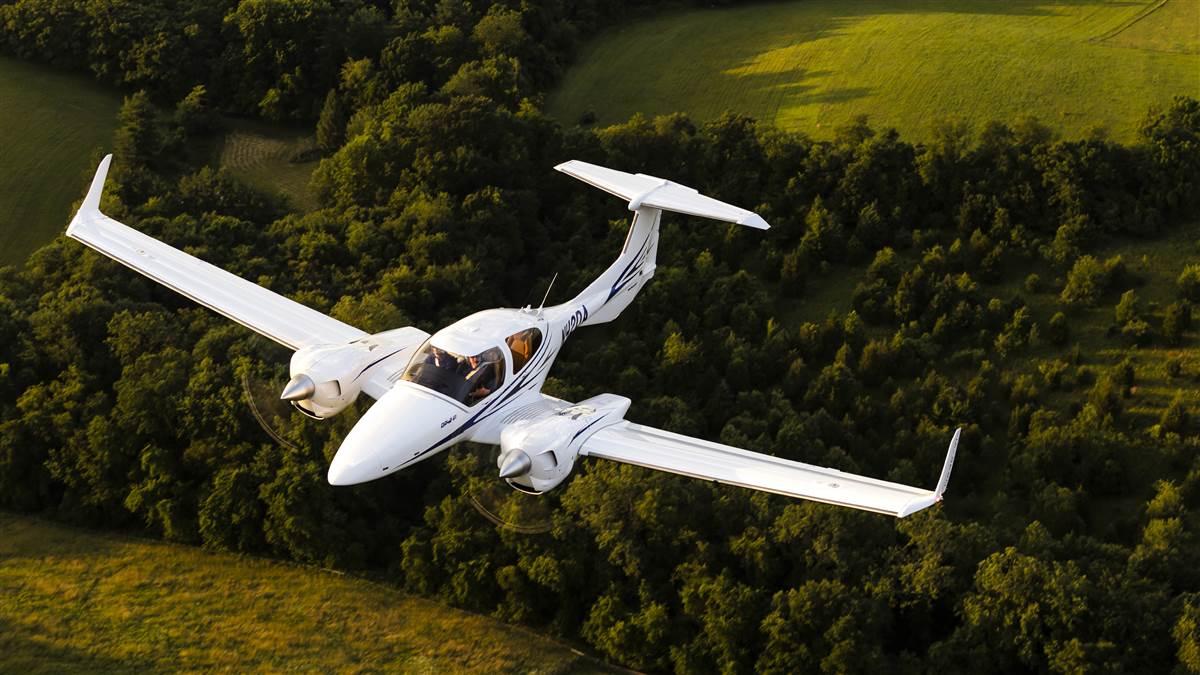It takes two
Especially when it comes to pilots

While I appreciate our Cessna 172’s simplicity and affordability, I lament its sole vacuum pump that, by my choosing, limits me from flying in low IFR. Then there’s that lone powerplant that keeps my head on a swivel always looking for places to land—just in case. Flight at night or over vast stretches of water, mountains, or trees? Not ideal.
With 600 horsepower and a 1,900-pound useful load, our family’s Beechcraft Baron is a no-compromises, haul-anything, 200-knot traveling machine. But a 56-year-old twin is a challenge to maintain, and it never misses an opportunity to guzzle from the fuel pump. Where it shines, however, is having two of everything: two vacuum pumps, two alternators, two engines. The adage “The second engine gets you to the scene of the crash” can be true in cases of poor piloting, overloading, or in twins with such low power that the loss of an engine simply means you’re going down—albeit slower. Champion’s Lancer and Piper’s early Apache come to mind.
Truth is, a well-maintained twin flown by a well-trained pilot within the airplane’s certification limits is a safer mode of travel than the single. Then there’s the psychological factor. A pilot who has all this power and redundancy may acquire a superiority complex and push his or her limits when it comes to weather, for example. Bad idea. A light piston twin isn’t an airliner. The same could be said when the Cirrus was introduced with its whole-airplane parachute. Having an out in the form of a second engine, redundant systems, or a parachute should be treated as just that—another tool to be used when the chips are down, not as an excuse to launch in horrid conditions.
At my airline job, a few recent incidents have driven home the benefit of the best redundancy there is: a second pilot. In the final moments of a transcontinental flight from Baltimore to San Francisco, we had a flap failure requiring the declaration of my first emergency (“My First Emergency,” March/April 2024 Flight Training) and a more recent incident involving a passenger illness. During both incidents, I became acutely aware of the advantage of having a second pilot.
In the case of the flap failure, the pilot not flying can dive into the manual and work the problem while the second pilot flies or manipulates the autopilot and speaks to ATC. In between those duties, it’s critical to keep each other in the loop. In the case of the medical emergency, I passed the controls over to my first officer to take care of the airplane and radios while I consulted with flight attendants, dispatch, and MedLink, our in-flight medical consultants. These medical situations can be time consuming, distracting, and if serious, time critical. I couldn’t imagine being solo and managing such an event.
On a recent flight in my family’s Baron from Boston to Maryland’s Eastern Shore, I sorely missed having a second pilot. Anyone who’s flown IFR in the Northeast knows that reroutes are very common and often occur multiple times during a flight. In this case, the first reroute came soon after takeoff, while being vectored to an airway and climbing in IMC. First, ATC gave me direct to a fix that I didn’t have on my route. I’d love to get the autopilot on to reduce my workload, but I needed to enter the fix in my route on the GPS navigator. I requested and received an initial heading to buy time. After ATC gave me the phonetic spelling, I twisted the knobs on the Garmin GNS 430W, punched Direct, and got the autopilot on to relieve some of the workload. While I’m pretty good with the Garmin 430 in our airplane, I loathe having to put airways into it. Typically, I just load the points that involve a course change. Well, the new route had lots of course changes requiring lots of twists and pushes on the navigator.
After finally inputting everything and nearing the top of climb, I got another full reroute. Ugh. As I listened to the route, I was incredulous at what corrupt system or human came up with such a solution. DCA VOR? Really? Not only was that 50 miles past my destination, I’m also quite sure I’d be intercepted if I actually flew over it.
“It’s the only route the computer will allow,” answered ATC. Not surprised. It’s just par for the course when flying in the Northeast. Sure enough, later on another reroute came, but at least it made sense and didn’t require a trip through the most restrictive airspace in the country.


